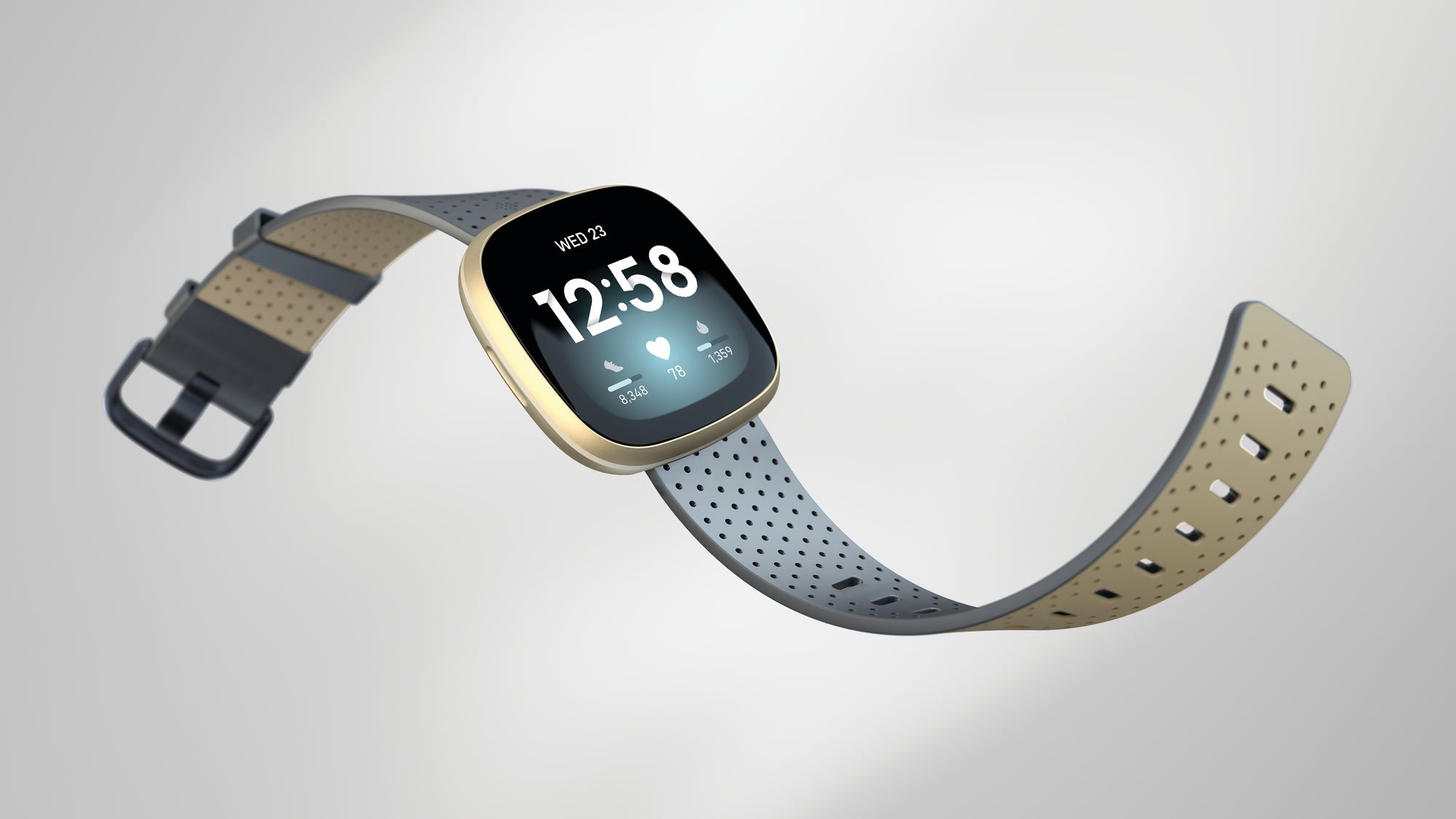

Other activity monitors I’d seen were either bulky, unwieldy, or less advanced bracelet-style trackers like Fitbit’s own Charge. I took the Fitbit Versa 3 out of its box and was immediately surprised by how attractive it is. Getting Started With the Fitbit Versa 3 A rounded silhouette helps the Fitbit Versa 3 look and feel good. This is a plus if you’re looking for subtlety, and an accessory you wear nearly 24 hours a day ought to look subtle. Both generations of the Versa are more rounded than the Apple Watch and therefore look more like regular digital watches than an industrial flavor of smartwatch. The design of the 40mm aluminum case is also sleeker than that of its 39mm predecessor’s, in that it doesn’t have a visible button on its side. Its integrated microphone/speaker allows you to take calls directly from your wrist and interact with Amazon Alexa or Google Assistant (over Bluetooth when paired with a smartphone). Out on the street, it allows you to make purchases by tapping your smartwatch to card readers (setting up Fitbit Pay required). To name a few new features the platform supports, the Versa 3 has GPS, measures Active Zone Minutes (time spent burning fat or in full cardio mode) when you’re at the gym. It also charges faster, has a longer battery life, and incorporates additional sensors. Evolutionary more than revolutionary, it’s a step up from the previous Versa generation in that it has a larger 1.58-inch, 336 x 336 resolution display (an increase from the 1.39-inch, 300 x 300 screen in the Versa 2) that offers sharp viewing angles without weighing more. The Versa 3 is the latest in the Versa smartwatch series and falls between the Versa 2 and the more pricey and advanced Sense-placing it as one of the best Fitbit watches to transition from office to extracurriculars. And the Fitbit Versa 3 perfectly fits in with but also stands out among the crowd, monitoring heart rate, calorie-burning, blood oxygen levels, step tracker, and more without losing the visual appeal of a smartwatch. This is one of the reasons smartwatch fitness trackers and activity monitors have become so popular: These little wrist computers act as intermediaries between body and phone, collecting a wealth of information on your health and habits as you move through life. Smartphones can automatically measure your movement via apps and accelerometers, which give you basic data, but you may not keep your phone on you at all times. There are seemingly endless approaches if you’re looking to track your health and fitness.

We may earn revenue from the products available on this page and participate in affiliate programs.


 0 kommentar(er)
0 kommentar(er)
